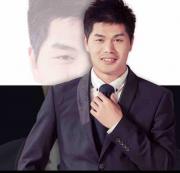《HR三支柱的规划与实施》
《HR三支柱的规划与实施》详细内容
《HR三支柱的规划与实施》
Meet the Three-pillar Model
HR三支柱的规划与实施
(12课时,12 hours)
课程综述
本课程是清华大学MBA总裁班的好评课程,用一句话描述本课程,是“科技公司的HR蓝图”。
Recommendation
This is a highlighting course of Tsinghua EMBA. To summarize this course in one sentence, is “human resource blueprint of Hi-tech companies”.
课程导言
工业革命以来,企业都在追求重资产、大规模。基于企业追求,人力资源演化成了职能管理模式。上世纪后期,科技公司开始追求轻资产、高人效。围绕新兴公司的追求,人力资源管理的“三支柱模式”应运而生。三支柱模式,是把HR职能分为三个部分,共享服务中心、业务伙伴、专家中心(如下图所示)。这三个部分,即为人力资源管理的“三支柱”。
三支柱模式有三个优势,人效高、弹性大、响应快。因为有这三大优势,三支柱模式被越来越多的企业采用。如果你所在的公司,也想采用三支柱模式,本课程能助你一臂之力。
Overview
Since the industrial revolution, companies have been pursuing fixed assets and large scale. Based on companies’ pursuits, human resource management evolved into a functional model. In the late last century, hi-tech companies began to pursue asset-light and high personnel efficiency. Around the pursuit of emerging companies, the "three-pillar model" of human resource management came into being. The three-pillar model divides HR functions into three parts, Center of Expertise, Business Partner, and Shared Service Center (as shown in the upper diagram). These three parts are the "three pillars" of human resource management.
The three-pillar model has three advantages: quicker response, higher person efficiency, and higher flexibility. Because of these advantages, the three-pillar model has been adopted by more and more companies. If your company also wants to adopt the three-pillar model, this course can help you.
课程收益
系统知识:学习该课程,学员能全面了解人力资源三支柱的各个部分,以及各部分之间的相互作用。
关键技能:学习该课程,学员能迅速掌握人力资源三支柱的规划过程,以及三支柱模式的实施要点。
Benefits
Systematic knowledge: In this course, you will see the big picture of human resource three-pillar model.
Critical skills: In this course, you will develop new skills for planning and implementing human resource three-pillar model.
课程特色
案例教学:以丰富的案例,讲述人力资源管理的三个支柱,让学员迅速掌握实施三支柱的步骤。
情景演练:以精心的演练,让学员结合工作场景,演练三支柱的实施,让学员达到知行合一。
Features
Perceptible: By case study, this course provides a stereoscopic profile of the human resource three-pillar model.
Practical: By scenario exercise, this course shapes skills of planning and applying three-pillar model.
内容目录
第一章 演化过程:三支柱模式的演化过程(1课时)
第二章 协作方式:三支柱模式的分工协作(2课时)第三章 特征分析:三支柱模式的特征分析(2课时)
第四章 专家中心:专家中心的机制与功能(1课时)
第五章 业务伙伴:业务伙伴的职能和技能(2课时)
第六章 服务中心:服务中心的输入和交付(1课时)
第七章 导入步骤:三支柱模式的导入步骤(2课时)第八章 运行要点:三支柱模式的运行要点(1课时)
Contents
Chapter 1 Evolution: The Evolution of the Three Pillar Model (1 hour)
Chapter 2 Interaction: Collaboration in the three-pillar model (2 hours)
Chapter 3 Analyzing: Characteristics of the Three Pillar Model (2 hours)
Chapter 4 Designing: Mechanism and Function of Expert Center (1 hour)
Chapter 5 Discovering: Functions of Business Partners (2 hours)Chapter 6 Delivering: Input and Delivery of Service Center (1 hour)
Chapter 7 Adopting: Stages of adopting the three-pillar model (2 hours)
Chapter 8 Focusing: Knowhow of the three-pillar model (1 hour)
课程进度
第一天 上午 9:00—12:00
第一章 演化过程:三支柱模式的演化过程
第二章 协作方式:三支柱模式的分工协作
第一天 下午 13:30—16:30
第三章 特征分析:三支柱模式的特征分析
第四章 专家中心:专家中心的机制与功能
第二天 上午 9:00—12:00
第五章 业务伙伴:业务伙伴的职能和技能
第六章 服务中心:服务中心的输入和交付
第二天 下午 13:30—16:30
第七章 导入步骤:三支柱模式的导入步骤
第八章 运行要点:三支柱模式的运行要点
Scheduling
1st Day, 9:00—12:00
Chapter 1 Evolution: The Evolution of the Three Pillar Model
Chapter 2 Interaction: Collaboration in the three-pillar model
1st Day, 13:30—16:30
Chapter 3 Analyzing: Characteristics of the Three Pillar Model
Chapter 4 Designing: Mechanism and Function of Expert Center
2nd Day, 9:00—12:00
Chapter 5 Discovering: Functions of Business Partners
Chapter 6 Delivering: Input and Delivery of Service Center
2nd Day, 13:30—16:30
Chapter 7 Adopting: Stages of adopting the three-pillar model
Chapter 8 Focusing: Knowhow of the three-pillar model
目标学员
成熟企业的中高层经理、创业公司的创始团队
Intended participates
Top managers of established companies, executive team of startup companies.
课堂形式
研习班,班级最佳人数为35人。
Course format
Workshop, recommended number of class members is 35.
课堂练习
小组模拟:演练成果,怎样实现部分培训的外包 (30分钟)
小组模拟:演练成果,怎样建立外部的专家团队 (30分钟)
小组讨论:讨论成果,怎样识别战略的关联事务 (15分钟)
小组模拟:演练成果,怎样梳理项目的流程因素 (30分钟)
小组讨论:讨论成果,怎样确定服务的体验标准 (15分钟)
小组模拟:演练成果,怎样明确业务伙伴的角色 (30分钟)
小组讨论:讨论成果,怎样规划人员的生涯发展 (15分钟)
Classroom exercises
Roleplay: how to outsource basic training (30 minutes)
Roleplay: how to build an external expert team (30 minutes)
Discussion: how to identify the strategy correlation (15 minutes)
Roleplay: how to analyze process factors (30 minutes)
Discussion: how to set the service experience standard (15 minutes)
Roleplay: how to clarify the roles of business partners (30 minutes)
Discussion: how to plan the career development (15 minutes)
课程大纲 Course outline
第一章 演化过程:三支柱模式的演化过程
本章的课前思考问题:人力资源部门,是战略部门,还是服务部门?
一 阶段:人力资源管理的四个阶段
职能阶段:专业事务导向,提高效率 1960s以前
资源阶段:资源价值导向,发现价值 60s到80s
战略阶段:核心优势导向,构建优势 80s到00s
支柱阶段:业务支持导向,快速响应 00s以后
二 分析:人力资源工作的类型分析
专家型、战略型的工作:例如制定方针、标准,占10%
伙伴型、支持型的工作:例如分析流程、绩效,占30%
服务型、操作型的工作:例如工资发放、考勤,占60%
学术背景讲解:拉姆·查兰和戴维·尤里奇的观点分歧
三 逻辑:三支柱模式的逻辑
拆分:把HR活动拆分为专家型、伙伴型、服务型
重组:把HR活动重组为COE、BP、SSC
本章的教学目标:让学员了解三支柱模式的背景及逻辑。
Chapter 1 Overview, understanding human resource strategy
Pre-training question of this chapter: Why do hi-tech companies prefer the three-pillar model?
The four stages of human resource management
Personnel management, efficiency directed
Resource management, value directed
Strategy management, advantage directed
Three-pillar, business directed
Analysis: Analysis of the types of human resource work
Strategy and expert work: accounting for 10%
Coaching and Supportive work: accounting for 30%
Operational and service work: accounting for 60%
Background explanation: debate between Ram Charan and Dave Ulrich
Logic: logic of the three-pillar model
Breakdown: breakdown HR’s work
Reorganization: reorganize HR activities into SSC, BP, COE
Benefits from this chapter: advantages and challenges of the three-pillar model.第二章 协作方式:三支柱模式的分工协作
本章的课前思考问题:人力资源部和其他部门是什么关系?
一 专家中心(COE)的活动
战略解读:识别战略目标中的人力资源事务
专业指导:提出人力资源事务的原则和标准
需求响应:响应业务伙伴和共享中心的需求
二 业务伙伴(BP)的活动
业务解读:识别业务目标中的人力资源事务
业务支持:提出人力资源事务的方案和步骤
需求响应:响应业务部门对人力资源的需求
三 共享中心(SSC)的活动
服务规范:共性人力资源服务的标准化
操作实施:人力资源方案的具体实施
需求响应:响应员工对标准服务的需求
小组练习1:模拟,怎样实现部分培训外包
本章的教学目标:让学员理解三支柱的分工协作。
Chapter 2 Efficiency, building hard power of execution
Pre-training question of this chapter: What is the relationship between HR department and other departments?
Activities of the Center of Experts (COE)
Decoding: Identifying HR issues in strategic goals
Directing: Setting the principles and standards of HR affairs
Responding: responding to the needs of BP and SSC
Activities of Business Partners (BP)
Interpreting: Identifying HR issues in business goals
Supporting: proposing plans and steps for HR affairs
Responding: responding to the needs of business departments
Activities of Sharing Center (SSC)
Specification: standardization of common HR services
Implementation: the implementation of HR program
Responding: responding to employees' demand for standard services
Group exercise 1: Roleplay, how to outsource basic training
Benefits from this chapter: Understanding the roles of three pillars and their collaboration. 第三章 特征分析:三支柱模式的特征分析
本章的课前思考问题:相比职能模式工,三支柱模式有什么特点?
一 优势:三支柱模式的优势
方向准:始终以业务为中心,人力资源职能的方向准确
人效高:基础和尖端的服务外包,减少人员、提高人效
响应快:人力资源深入一线业务部门,和业务需求同步
二 机遇:三支柱模式的机遇
开放性:可以广泛接触外界,能拓宽人员的视野
适应性:职能可以项目化执行,提高环境适应性
多元性:可以多项目同时执行,提高内部多元性
案例讲解:索尼、腾讯、阿里,三支柱模式的共同点与差异
三 挑战:三支柱模式的挑战
数字化:没有数字化基础,能不能实行三支柱
领导力:业务领导,如何做出人力资源的决策
专业性:内部专家,如何跳出企业的知识局限
小组练习2:模拟,如何建立外部专家团队
本章的教学目标:让学员了解三支柱模式的特征
Chapter 3 Analyzing: Characteristics of the Three Pillar Model
Pre-training question of this chapter: What is the relationship between HR department and other departments?
Advantages: the advantages of the three-pillar model
Accurate direction: focusing on the business
High person efficiency: improving person efficiency by outsourcing
Quick response: keeping pace with business needs
Opportunities: Opportunities in the three-pillar model
Openness: extensive contact with the outside world
Adaptability: functions can be implemented as projects
Diversity: multiple projects can be executed at the same
Case study: Sony, Tencent, Alibaba, the commons and differences
Three challenges: the challenge of the three-pillar model
Digitalization: the three-pillar model need a digital foundation
Leadership: business leaders should develop HR sense
Professionalism: experts shall go beyond knowledge limitations
Group exercise 2: Roleplay, how to build an external expert team
Benefits from this chapter: understanding the characteristics of the three-pillar model.第四章 专家中心:专家中心的职能与机制
本章的课前思考问题:什么样的HR可以成为专家?
一 专家中心的职能
规划战略:围绕公司战略,规划人力资源战略
提出标准:针对最佳实践,提出人力资源标准
制定制度:针对管理目标,制定人力资源制度
二 专家中心的运行机制
常态化:以战略导向为中心,形成研讨小组
专业化:以职能板块为中心,形成专业小组
项目化:以解决问题为目的,形成项目小组
案例讲解:处在多个项目组中的专家
三 专家中心的日常工作
主动型:优化标准、优化实践
响应型:响应战略、响应需求
发展型:赋能组织、赋能团队
案例讲解:领导力中心的常态任务与项目任务
小组练习3:讨论,怎样解读战略的关联性
本章教学目标:让学员理解专家中心的运行机制。
Chapter 4 Designing: Mechanism and Function of Expert Center
Pre-training questions of this chapter: What kind of HR can become an expert?
Functions of the Expert Center
Planning strategy: planning HR strategy around company strategy
Proposing standards: Proposing HR standards for best practices
Setting regulation: setting HR regulations for management goals
The operating mechanism of the expert center
Normalization: to form a seminar group focusing on strategy
Specialization: to form a professional group for upgrading
Projectization: to form a project team for problem-solving
Case study: experts in multiple project teams
Daily work of the expert center
Proactive: optimizing standards and optimizing practices
Responsive: responding to strategy and demand
Progressive: empowering organization, empowering team
Case study: normal and project tasks of the leadership center
Group exercise 3: Discussion, how to identify strategy correlation
Benefits from this chapter: understanding the operating mechanism of the expert center. 第五章 业务伙伴:业务伙伴的职能和技能
本章的课前思考问题:业务团队需要什么样的人力资源支持?
一 业务伙伴的职能
流程梳理:发现业务的流程缺陷
绩效分析:定位岗位的绩效障碍
动作分析:提取作业的最佳实践
二 业务伙伴的知识背景
作业管理:动作和时间分析
岗位管理:团队化工作设计
项目管理:优化流程的要素
案例讲解:业务团队欢迎的业务伙伴
三 业务伙伴的关键技能
激励:发现优势、唤醒激情
辅导:指导行为、提高技巧
沟通:获得信任、凝聚团队
案例讲解:业务伙伴的硬技能与软技能
小组练习4:演练,怎样梳理项目流程因素
本章教学目标:让学员理解业务伙伴的工作模式。
Chapter 5 Discovering: Functions of Business Partners
Pre-training questions of this chapter: What kind of HR support does the business department need?
Functions of business partners
Process analysis: locking the defects of business process
Performance analysis: positioning the performance barriers
Procedure analysis: finding out the standard procedure
Knowledge background of business partners
Task management: motion/time study
Post management: team work design
Project management: optimizing process elements
Case study: business partners welcomed by the business team
Key skills of business partners
Motivation: discovering advantages and awakening passion
Consultation: guiding behavior and building skills
Communication: gaining trust and uniting the team
Case study: hard and soft skills of business partners
Group exercise 4: Roleplay, how to analyze process factors
Benefits from this chapter: understanding the working mode of business partners. 第六章 服务中心:服务中心的输入和交付
本章的课前思考问题:哪些人力资源事务可以在线上完成?
一 服务中心的职能
数据:可以数据化的HR事务,如考勤记录、差旅报销
标准:可以标准化的HR活动,如在线测评、知识管理
规范:可以规范化的HR职能,如校园招聘、新人培训
二 服务中心的结构
员工自助中心:功能化应用程序,如资料上传
员工呼叫中心:一对一线上应答,如手续咨询
事务处理中心:面对面事务处理,如离职面谈
数据分析中心:后台数据的分析,如人均产出
运营管理中心:内部的管理支持,如采购管理
运营维护中心:服务中心的维护,如网络管理
运营执行中心:具体的活动执行,如培训组织
案例分析:服务中心的建设起点
小组练习5:讨论,怎样确定服务体验标准
本章教学目标:让学员理解服务中心的工作模式。
Chapter 6 Delivering: Input and Delivery of Service Center
Pre-training questions of this chapter: Which HR affairs can be done online?
Functions of the service center
Data: HR affairs that can be digitized
Standard: HR activities that can be standardized
Specification: HR functions that can be specified
Structure of the service center
Employee self-help center
Employee call center
Transaction processing center
Data analysis center
Operation management center
Operation and maintenance center
Activity execution center
Case study: the starting point of service center construction
Group exercise 5: Discussion, how to set the experience standard
Benefits from this chapter: understanding the function layout of the service center. 第七章 导入步骤:三支柱模式的导入步骤
本章的课前思考问题:传统的企业导入三支柱模式,应该从哪些开始?
一 导入三支柱模式的三种路径
从服务中心入手:信息和活动的标准化
从业务伙伴入手:支持和赋能的常态化
从专家中心入手:战略和系统的细节化
案例分析:京东的三支柱模式
二 模式导入的前期准备
明确目标:描述目标的预期形态
组建团队:组建实施的核心团队
规划路径:规划达成目标的路径
单点突破:选择推进的最初起点
三 模式导入的实施步骤
服务中心:数字化、标准化、手册化
业务伙伴:人才引进、强化培养、岗位培训
专家中心:项目外包、引入外脑、内部迭代
小组练习6:演练,怎样明确业务伙伴的角色
本章教学目标:让学员掌握三支柱模式的导入步骤。
Chapter 7 Adopting: Stages of adopting the three-pillar model
Pre-training questions of this chapter: Where should traditional companies start to adopt the three-pillar model?
Three ways to adopt the three-pillar model
Start from SSC: standardization of information and activities
Start from BP: normalization of support and empowerment
Start from COE: decomposition of strategy and system
Case study: JD’s three-pillar model
Preparations for adapting three-pillar model
Clarify the goal: describe the expected shape of the goal
Team building: build a core team for implementation
Planning the path: planning the path to achieve the goal
Single point breakthrough: choose the initial starting point
Three implementation steps of three-pillar model adapting
Service center: digitizing, standardization, textualization
Business partners: talent searching, on-the-job training
Expert center: outsourcing, external brain, internal iteration
Group exercise 6: Roleplay, clarifying the roles of business partners
Benefits from this chapter: understanding the adoption steps of the three-pillar model.
第八章 运行要点:三支柱模式的运行要点
本章的课前思考问题:在三支柱模式下,HR的职业生涯会有什么变化?
一 问题:采用三支柱模式前,要回答的问题
内部优化:通过三支柱模式,要获得哪些内部优化
竞争优势:通过三支柱模式,要获得什么竞争优势
员工价值:通过三支柱模式,员工能获得哪些价值
二 选择:三支柱模式面临的选择
服务中心,是主体自建,还是主体外包
业务伙伴,是业务背景,还是HR背景
专家中心,是实体中心,还是项目中心
三 保障:三支柱模式下的职能保障
人才梯队:如何建立三支柱模式下的人才梯队
生涯发展:如何规划三支柱模式下的生涯发展
战略独立:如何保证三支柱模式下的HR战略
小组练习7:演练,怎样规划人员的生涯发展
本章教学目标:让学员掌握三支柱模式的运行要点。
Chapter 8 Focusing: Knowhow of the three-pillar model
Pre-training questions of this chapter: Under the three-pillar model, what changes will HR's career have?
Questions to be answered before adopting the three-pillar model
Internal optimization: what internal optimizations should be obtained
Competitive advantage: what competitive advantage should be obtained
Employee value: what employees’ value should be obtained
Choices faced by the three-pillar model
SSC, is outsourced or self-developed
BP, is it business background or HR background
COE, is it a physical center or a project center
Functional guarantees under the three-pillar model
Backup system: how to establish the talent backup system
Career development: how to plan career development
Strategic independence: how to ensure the HR strategy
Group exercise 7: Discussion, how to plan the career development
Benefits from this chapter: understanding the knowhow of the three-pillar model.
刘向明老师的其它课程
《管理心理学:心理学在企业管理中的应用》 12.20
管理心理学:心理学在企业管理中的应用ManagementPsychology(6课时,6hours)课程推荐本课程被清华大学MBA总裁班评为最受欢迎的通识课程。用一句话评价本课程,是“用心理学的视角重新认识管理”。RecommendationThiscoursewasratedasthemostpopulargeneraleducationcoursebyT
讲师:刘向明详情
《人力资源战略的规划与实施》 12.20
FourDimensionsofHumanresourceStrategy人力资源战略的规划与实施(12课时,12hours)课程综述本课程是清华大学MBA总裁班的品牌课程,用一句话描述本课程,是“人力资源的战略地图”。RecommendationThisisabrandcourseofTsinghuaEMBA.Tosummarizethiscoursein
讲师:刘向明详情
《赋能领导力:中高层经理赋能下级的六个步骤》 12.20
赋能领导力——中高层经理赋能下级的六个步骤(12课时,两天)课程推荐用一句话描述本课程,是“像玩打怪升级游戏一样,学会赋能”。课程背景彼得现象——无效勤奋:基层经理晋升到中层和高层,要转变工作重点,因为中层的首要职责,不是亲力亲为地处理事务,而是通过赋能,让下级能独当一面。不会赋能的中高层经理,工作越勤奋,越不胜任岗位,这种勤奋和职责背离的现象,叫做“彼得现
讲师:刘向明详情
《构建创新型组织的五个步骤》 12.20
ConstructionofInnovativeOrganization构建创新型组织的五个步骤(12课时,12hours)课程综述本课程是清华大学MBA总裁班的精品课程,用一句话描述本课程,是“创新型组织的建设蓝图”。SummaryThisisabrandcourseofTsinghuaEMBA.Tosummarizethiscourseinonesent
讲师:刘向明详情
- [杨建允]2024全国商业数字化技
- [杨建允]2023双11交易额出炉
- [杨建允]DTC营销模式是传统品牌
- [杨建允]探析传统品牌DTC营销模
- [杨建允]专家称预制菜是猪狗食,预
- [潘文富]为什么店家都不肯做服务
- [潘文富]厂家对经销商工作的当务之急
- [潘文富]经销商转型期间的内部组织结
- [潘文富]小型厂家的招商吸引力锻造
- [潘文富]经销商发展观的四个突破
- 1社会保障基础知识(ppt) 21255
- 2安全生产事故案例分析(ppt) 20330
- 3行政专员岗位职责 19114
- 4品管部岗位职责与任职要求 16373
- 5员工守则 15537
- 6软件验收报告 15460
- 7问卷调查表(范例) 15204
- 8工资发放明细表 14660
- 9文件签收单 14315





